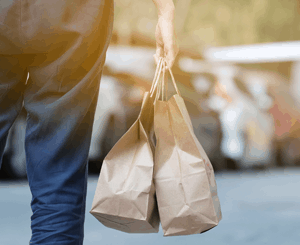
Horth Rasur | Shutterstock
By Sam Oches | The future of fast casual awaits
For a lot of fast casuals, 2020 proved to be tale of two halves. The first half, and in particular Q2, was brutally tough on sales. Once COVID arrived, a variety of factors became disadvantages to the category, from a reliance on lunchtime walking traffic in downtown business districts to big dining rooms prioritizing on-site experiences and customizable menus that didn’t translate well to off-premises sales.
The virus could have spelled doom for fast casual. After all, the category was already facing stiff headwinds between the tight labor market and over-saturation. But the sound of the death knell faded as fast casuals quickly tweaked their service and operations. In fact, many were able to return to positive sales comps by the end of 2020, and a recent report from Datassential showed that fast casual accounted for a bigger share of newly opened restaurants–21.5 percent–than any other category between March and October, even though it only makes up 11.4 percent of the industry overall.
These days, experts are quick to point out the silver linings of the pandemic that fast-casual brands can tap into in a post-pandemic world, from less competition to pent-up consumer demand to trade-down from casual dining to more capital available for growth. But how should brands position themselves to realize their full potential? Here are 15 tips that those experts have for fast-casual operators looking to step on the accelerator.
5. Make everything portable
Dine-in business will surely return once the risk of COVID-19 diminishes. But off-premises service will continue to be a critical piece to success for any restaurant, which means the portability of menu items will need to be an ongoing focus.
Mark Moeller, founder of restaurant consultancy The Recipe of Success, says operators must consider how they can protect the quality of their food both inside the restaurants and out. “If we’re going to do delivery and pickup, which has to be a part of the fast-casual concept, that means our product has to be able to travel well,” Moeller says. “So we have to test the product that we’re going to do…and the paper goods that we’re serving it in.”





 lakshmiprasada S | Shutterstock
lakshmiprasada S | Shutterstock Rawpixel.com | Shutterstock
Rawpixel.com | Shutterstock